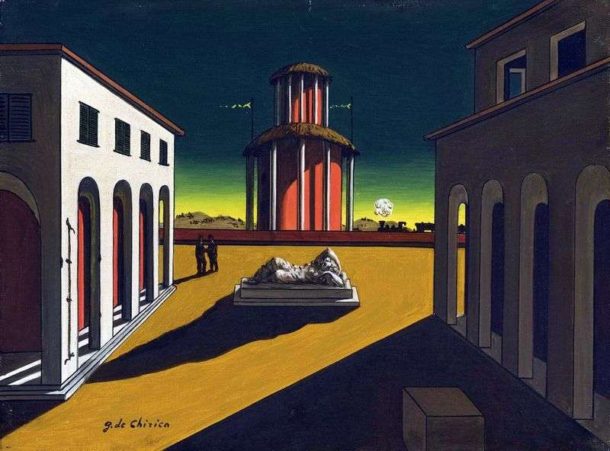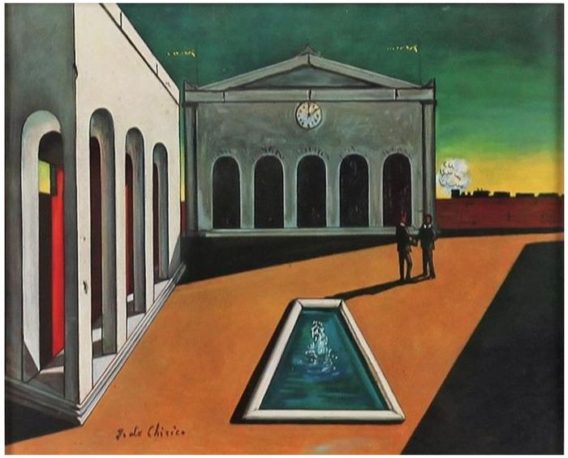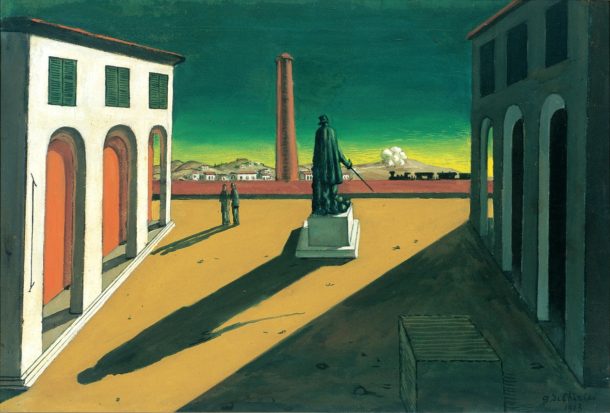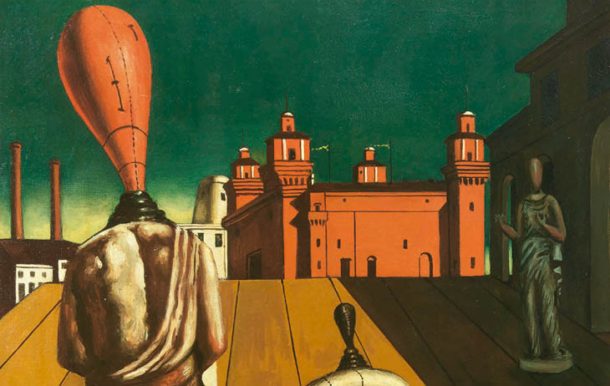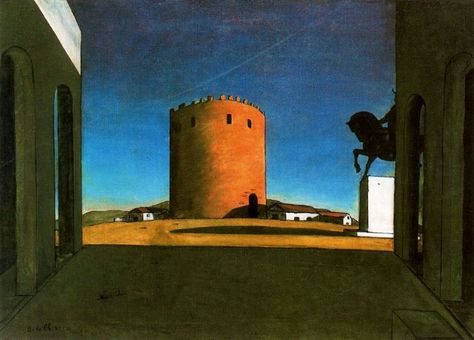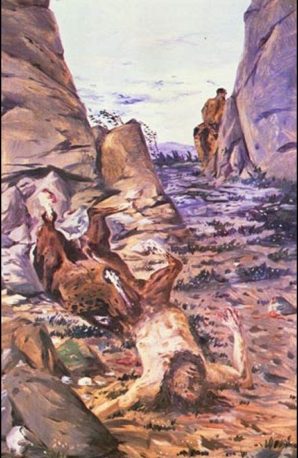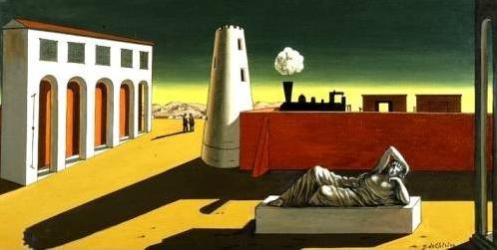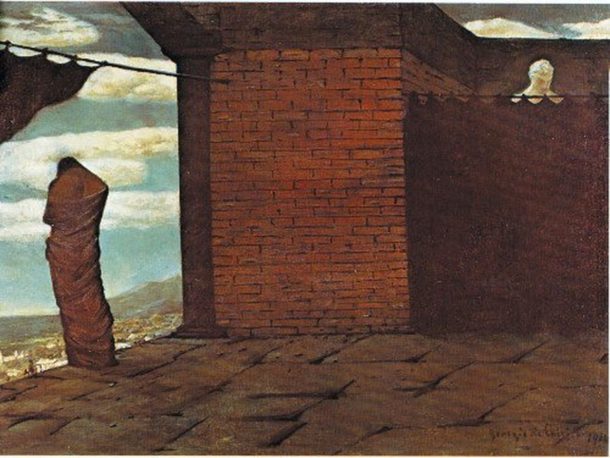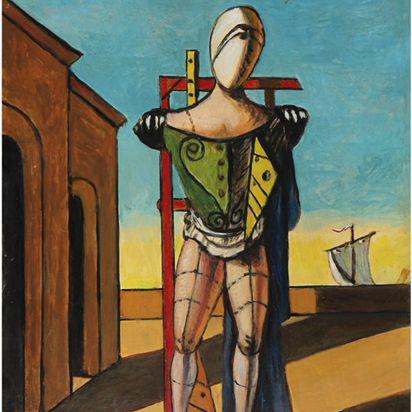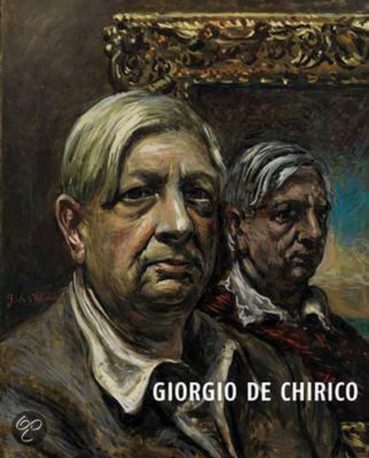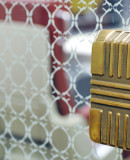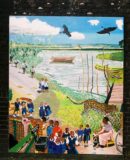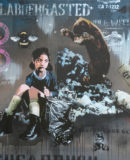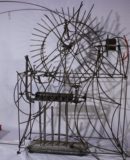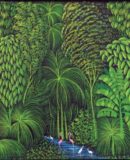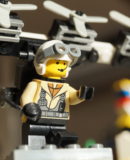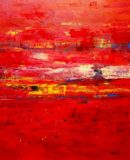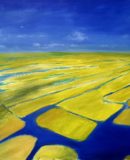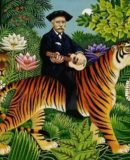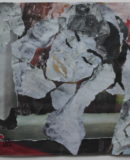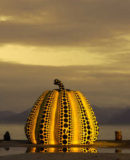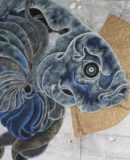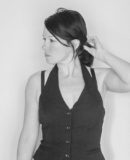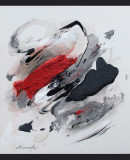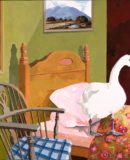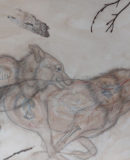World Fine Art Professionals and their Key-Pieces, 283 - Giorgio de Chirico
World Fine Art Professionals and their Key-Pieces, 283 – Giorgio de Chirico
The first thing that comes to mind when the name Giorgio de Chirico is mentioned is his paintings of streets, arcades, towers and statues. A powerful sun is shining, the shadows are sharp and no human is to be seen.
They are clearly images from Southern Europe, with classical environments. De Chirico’s mother was a Greek with roots in Genoa, born in Smyrna (now Turkey), his father was a Sicilian baron, also with Greek roots. Kyriko was the family name in Greece. When Giorgio was born, his father, an engineer, worked as a superintendent on the construction of a railway in Greece.
Munich
After his father died in 1905, the family moved to Germany, not after first visiting Florence. Giorgio went on to study at the Academy of Fine Arts in Munich, where he not only received all kinds of art lessons, but was also influenced by the work of Nietzsche, Schopenhauer and Weininger. As far as painting examples are concerned, he concentrated on the works of Arnold Böcklin and Max Klinger. The style of his early paintings, such as ‘Il centauro morente’ (The dying centaur) (1909), betrays Böcklin’s influence.
Milan
In the summer of 1909 Giorgio went back to Italy, to Milan. He began to paint in a simpler style of flat, anonymous surfaces. In early 1910 he moved to Florence, where he painted the first of his series ‘metaphysical city squares’, L’enigma di un pomeriggio d’autunno (The riddle of an autumn afternoon), after a revelation he felt in Piazza Santa Croce. He also painted L’enigma dell’oracolo (The Riddle of the Oracle) while in Florence. In July 1911 he spent several days in Turin on his way to Paris. De Chirico was deeply moved by what he called Turin’s ‘metaphysical aspect’, especially the architecture of the arches and squares.
Metaphysical art
Between 1909 and 1919 he experienced his metaphysical period as he called it. The work shows ghostly, gloomy images. We see motionless cityscapes in the clear Mediterranean daylight. After a while, his interest turned to messy spaces with mannequin-like hybrid figures.
De Chirico’s conception of metaphysical art was strongly influenced by the books of Nietzsche, whose writing style fascinated de Chirico. Especially the suggestions of unseen omens under the appearance of things. Metaphysical art combined everyday reality with mythology and evoked inexplicable moods of nostalgia, tense expectation and alienation.
Paris
In 1911 he went to Paris where he visited his brother Andrea. Through his brother he came into contact with Pierre Laprade, a jury member of the Autumn Salon, and was able to exhibit three works. Two years later, in 1913, he exhibited in the Salon des Indépendants and again in the Autumn Salon. His work was noticed by Pablo Picasso and Guillaume Apollinaire. He sold his first work, ‘La torre rossa’ (the red tower). Through Apollinaire he met the art dealer Paul Guillaume, with whom he signed a contract for more artistic output.
Ferrara
When the first war broke out he went back to Italy. He enrolled in the army but was deemed unfit and sent to a hospital in Ferrara. The city of Ferrara inspired him to create a series of works, he also met Carlo Carrà with whom he founded the pittura metafisica movement. He continued to paint a lot and in 1918 he moved to Rome. From that year on, his work was shown all over Europe.
In 1919 he published an article in Valori Plastici entitled ‘Il ritorno all’artigianato’ (Return to craftsmanship), in which he defended a return to traditional methods and iconography. He envisioned the classical masters Rafael and Signorelli. He turned against modern art.
The Surrealists
Surrealist writer André Breton discovered his work in the early 1920s. He was very impressed. The same happened with many young artists interested in surrealism. In 1924 De Chirico visited Paris and was admitted to the Surrealists. However, they were critical of his post-metaphysical art.
The following year, he married a Russian ballerina, Raissa Gurievich. The surrealists became increasingly critical of his latest work and he soon left the group. However, that did not prevent De Chirico’s rise. In 1928 he had his first exhibition in New York, and soon after in London. In 1929 he published a novel entitled ‘Hebdomeros, il metafisica’ (Hebdomeros, the metaphysics). In the same year he made set designs for Sergei Diaghilev.
In 1930 De Chirico married his second wife, again a Russian: Isabella Pakszwer Far, with whom he would stay for the rest of his life. They moved from France to Italy in 1932 and to the US in 1936, eventually settling in Rome in 1944. In 1948 he bought a house near the Spanish Steps; now Casa Museo Giorgio de Chirico (the Giorgio de Chirico House Museum), a museum dedicated to his work.
San Francesco a Ripa
In 1939 he started working à la Rubens, neo-Baroque, but that was less appreciated by the public and the art world. in 1945 he published his memoirs. He remained very active even when he turned 90. He was admitted to the French Académie des Beaux-Arts. De Chirico died in Rome on November 20, 1978. His remains were moved in 1992 to the Romanesque church of San Francesco a Ripa.
De Chirico’s most famous works are the paintings from his metaphysical period. In it he developed a repertoire of motifs – empty arcades, towers, elongated shadows, mannequins and trains to which he gave an atmosphere of desolation and emptiness. At the same time it radiated a sense of strength and freedom.
Influence
De Chirico’s style has influenced several filmmakers, especially in the 1950s to 1970s, such as Valerio Zurlini and Michelangelo Antonioni. Several poets wrote poems inspired by his work. And David Bowie’s song ‘Love the Alien’ also went back to De Chirico’s oeuvre.
Images:
1)L’enigma di un pomeriggio d’autunno, 2) La Partenza dell’amico, 3) from the series ‘metaphysical city squares’, 4) Il volto della metafisica, 5) La torre rossa, 6) Il centauro morente, 7) from the series ‘metaphysical city squares’, 8) L’enigma dell’oracolo, 9) mannequin with sailing boat, Giorgio de Chirico
https://ifthenisnow.eu/nl/personen/giorgio-de-chirico
Disclaimer: The views, opinions and positions expressed within this guest article are those of the author Walter van Teeffelen alone and do not represent those of the Marbella Marbella website. The accuracy, completeness and validity of any statements made within this article are not guaranteed. We accept no liability for any errors, omissions or representations. The copyright of this content belongs to Walter van Teeffelen and any liability with regards to infringement of intellectual property rights remains with the author.

